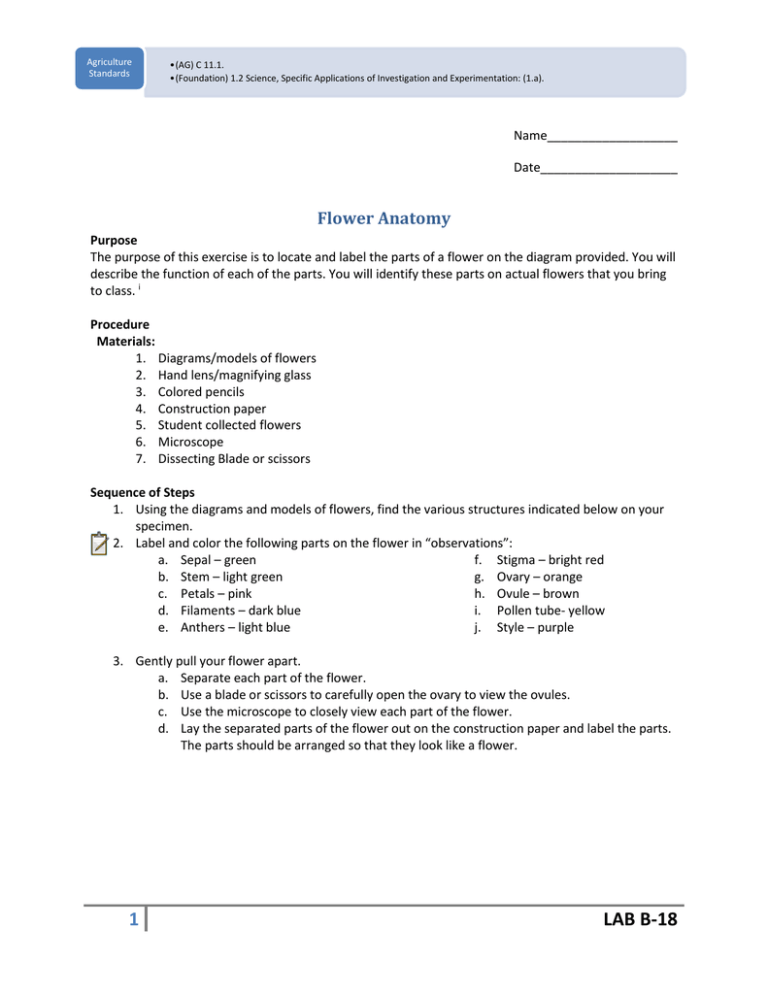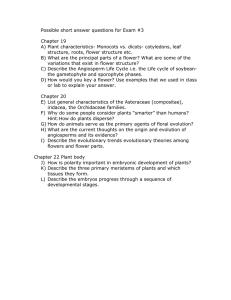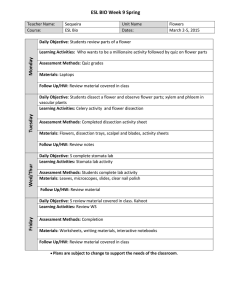B-18 Flower Anatomy
advertisement

Agriculture Standards •(AG) C 11.1. •(Foundation) 1.2 Science, Specific Applications of Investigation and Experimentation: (1.a). Name___________________ Date____________________ Flower Anatomy Purpose The purpose of this exercise is to locate and label the parts of a flower on the diagram provided. You will describe the function of each of the parts. You will identify these parts on actual flowers that you bring to class. i Procedure Materials: 1. Diagrams/models of flowers 2. Hand lens/magnifying glass 3. Colored pencils 4. Construction paper 5. Student collected flowers 6. Microscope 7. Dissecting Blade or scissors Sequence of Steps 1. Using the diagrams and models of flowers, find the various structures indicated below on your specimen. 2. Label and color the following parts on the flower in “observations”: a. Sepal – green f. Stigma – bright red b. Stem – light green g. Ovary – orange c. Petals – pink h. Ovule – brown d. Filaments – dark blue i. Pollen tube- yellow e. Anthers – light blue j. Style – purple 3. Gently pull your flower apart. a. Separate each part of the flower. b. Use a blade or scissors to carefully open the ovary to view the ovules. c. Use the microscope to closely view each part of the flower. d. Lay the separated parts of the flower out on the construction paper and label the parts. The parts should be arranged so that they look like a flower. 1 LAB B-18 Observations 1. Label and color the diagram using the directions above.ii Conclusions: 1. Fill in the chart below with the functions of the listed parts and whether the part is associated with the male or female function of the flower. Part Function Male/Female/Neither Sepal Petal Pistil Stamen Filament Anther Stigma Style Ovary Pollen Ovule 2. What factors can affect asexual plant reproduction? 3. What cell(s) in the flower go through Meiosis? How do you know? 4. How did Mendel use his knowledge of the flower parts to develop his laws of segregation and independent assortment? i Agricultural Biology Curriculum Lesson Plans. Sacramento: California State Department of Education, Agriculture Education Unit, 1990. ii "How to Grow a Flower." The Kaleidoscope of Life. 2002. Program for Interdisciplinary Learning Through the Arts. 3 Oct 2008 <teachart.msu.edu/pila/images/flower.jpg>. 2 LAB B-18




